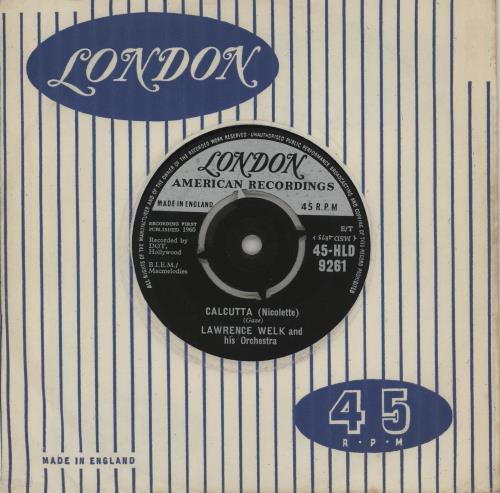
#Lawrence welk calcutta tv#
It was safe-and-sane TV entertainment, painfully predictable and stable and wholesome.įor that, he went virtually without praise from within the TV industry itself. Welk's criteria for success was to keep it sweet and simple: play the proven standards the people want to hear, in the simplest of arrangements, and in less than three minutes just in case someone did not like a particular song. As recently as 1988 Welk could be heard cueing his band with his "uh-one and uh-two" signature countdown on weekly rebroadcasts of his television shows on PBS outlets throughout the country. Welk and his bubbling music-makers were a television staple for 36 years, making their debut in an era when Arthur Godfrey, Groucho Marx, George Burns and Gracie Allen, Kukla, Fran and Ollie and Jackie Gleason's Honeymooners were at the top of the Nielsens. Great Motion Picture Themes, Various Artistsĥ.Mr.

The bubbly-music bandleader continued to prosper on TV until 1982.

It was Welk’s first and last Number One album and single of the rock era. Exactly a month later, Calcutta simultaneously topped the stereophonic and monophonic album charts. The single reached Number One on February 13, 1961. “We had to use harpsichord on just about every recording after that,” says Cates.Īlthough none of the other tracks on the album actually became hits, the popularity of “Calcutta” was sufficient enough to drive the album to the top.
#Lawrence welk calcutta full#
Quick to cash in on his rising popularity, Welk rushed into the studio in between TV shows to cut a full album around “Calcutta.” As the album’s back cover states, “the smash hit single leads a parade of instrumental hits.” In keeping with the feel of “Calcutta,” harpsichord was prominently featured on the album. The TV exposure and radio play of “Calcutta” sent the single climbing the Hot 100. Welk’s popularity was so great that ABC gave the bandleader a second hour on October 8, 1956, for Lawrence Welk’s Top Tunes and New Talent. Three years later, on July 2, 1955, The Lawrence Welk Show was picked up by the ABC television network. In 1952, Welk made his television debut on KTLA in Los Angeles. Undoubtedly contributing to Welk’s resurgence was the exposure he received on television.

Even in the rock era, he had charted 13 albums prior to Calcutta! While the majority of his albums peaked in the mid-teens, Last Date, his 1960 album, peaked at number four. While critics often attacked Welk’s music for its blandness, he was certainly popular with the public. “We decided to use a harpsichord.” Originally, the track was set to be the B-side of “My Grandfather’s Clock,” but then radio picked up on the song, featuring Frank Scott on the harpsichord. “Instead of the ‘champagne music’ we decided that we would do something a little different,” Cates says. “Calcutta” was a German tune composed by Heino Gaze and originally titled “Tivoli Melody.” It marked a change for Welk, who had been leading bands since the middle of the 1920s. “If it’s good enough for you to do, then it’s good enough for me,” Welk told Cates. When Cates, who was also a recording artist at the time, said that he would record the song, Welk relented. “I listened to it and I thought it was interesting, but when I played it for Lawrence, he wasn’t so sure,” says Welk’s musical supervisor, George Cates.

When veteran German-born band-leader Lawrence Welk first heard “Calcutta” he wasn’t impressed. Track listing: Calcutta / Sailor (Your Home Is the Sea) / Perfidies / April in Portugal / Humoresque Boogie / Corrine Corrina / Bombay Mam’selle / Mountain King / Blue Tango / Ruby / Save the Last Dance for Meġ1 weeks stereo, 8 weeks mono (nonconsecutive) Arrangements: Larry Gordon, Bill Fontaine, George Wyle, Bob Ballard, George Cates, Milt Rogers, and Joe Rizzo


 0 kommentar(er)
0 kommentar(er)
